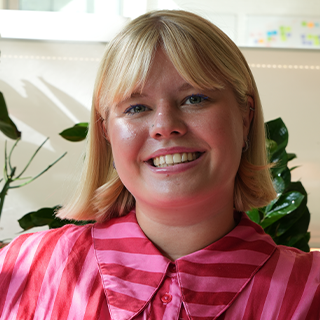True crime podcast ‘Serial’ subject Adnan Syed released after 23 years in prison. What now?
A Baltimore judge has officially rescinded Adnan Syed’s murder conviction after his legal team presented a new year-long review to the court which detected two new potential suspects and detailed a string of uncovered evidence.
According to the BBC, Syed, 41, has been released into home detention after almost 23 years behind bars. The Baltimore-based man was arrested in 1999, when he was just 19 years old, and in 2000 was sentenced to life in prison—accused of the murder of his ex-girlfriend Hae Min Lee after her body was found buried in the woods.
In 2014, this highly publicised case became the prime subject for season one of the true crime podcast Serial. Sarah Koenig, an American journalist, hosted the 12-part series which included 15 months of investigations, interviews and research into the murder and following conviction of Syed. Koenig also posted an episode on 20 September 2022 which detailed the most recent update, Syed’s release from prison.
While Syed has not officially been found innocent, this landmark decision heeds worldwide attention and acts as a crucial move towards reopening the investigation into Lee’s death. Despite all of the prosecution’s previous appeals having been denied, Judge Melissa Phinn decreed that she was vacating his conviction “in the interest of fairness and justice,” adding that the state had failed to share integral evidence that could have helped Syed’s defence at trial.
The Baltimore State’s Attorney’s Office, which has studied the case over the past year alongside Syed’s latest defence attorney, stated that he definitely “deserves a new trial.”
Some background information
For those of you who may not have heard of Syed until today, or indeed the true crime podcast Serial, let us walk you through some important background information.
In February 1999, Syed was a senior in high school in Baltimore, Maryland. One day after school, Syed’s ex-girlfriend and former classmate, Hae Min Lee, was strangled and buried in a wooded forest.
Six weeks after her disappearance, Syed would be charged and convicted of her death, receiving a life sentence in prison for first-degree murder, robbery, kidnapping and false imprisonment. Since his arrest, Syed has continually maintained his innocence.
The Telegraph recently stated that during the original trial in 1999, Syed was painted as the scorned lover. The prosecution argued that he had felt humiliated by Lee and, after having been rejected, acted out in violence.
In November 2019, The New York Times reported that Syed’s most recent appeal to the Supreme Court had been denied.
However, this most recent update of his release into home detention sparks hope for Syed’s family who have been longing for a fair trial that evaluates the new evidence that has come to light since the young man’s arrest in 1999.
‘Serial’
In 2014, Serial, a true crime podcast, chose to focus its first season on this highly publicised case, specifically with the angle of whether or not Syed received a fair trial based on the evidence presented in court. Since its launch, the podcast has been downloaded approximately 300 million times—and during the year of its debut, won a Peabody award.
One of the most shocking takeaways from Serial included a potentially life-saving element that was left out of the criminal trial. Koenig dove right into the crux of the matter during episode one—a missing alibi.
Asia McClain is a former classmate of Syed who, according to Syed himself, wrote him a letter just after his arrest claiming that she specifically remembers seeing him at the public library promptly after school on the day Lee was found murdered. Yet, despite this valid and corroborated alibi, McClain was never once called to witness at the trial. Even worse, she was never once contacted by the defence attorneys—thereby stripping away one of Syed’s most valuable assets.
Another one of the most important aspects of the trial that Koenig explored is the “coded language” prosecutors used during Syed’s trial. Refinery29 summarised this by stating that the prosecution “indicated Syed’s faith was what drove him to kill Lee. They spoke of other instances in which jilted Pakistani men killed their wives or girlfriends, ignoring the fact that Syed was born and raised in Baltimore.”
Koenig’s style and thorough investigation gave this case a national audience, leading many to question whether or not it inadvertently helped to maintain momentum for a revisited trial, with netizens everywhere donning their sleuth attire and hunting for the true criminal. Others have also suggested that Serial directly influenced a catalogue of true crime podcasts that have since premiered on a range of streaming platforms.
All that being said, Syed has previously stated his own distrust and worries about the podcast. In episode eleven, Koenig recalls a letter she received from Syed from prison. She stated, “He wanted me to evaluate his case based on the evidence alone, not on personality.”
She went on to read a segment of the letter: “I didn’t want to do anything that could even remotely seem like I was trying to befriend you or curry favour with you. I didn’t want anyone to ever be able to accuse me of trying to ingratiate myself with you or manipulate you.”
The Lee family
For others—most significantly, the Lee family—the podcast has been a sore reminder of the young girl’s death.
In 2016, after Syed was initially granted a new trial, the family spoke to news reporters and stated that Serial “reopened wounds few can imagine.” Lee’s brother went on to say: “This is not a podcast for me. This is real life—a never-ending nightmare for 20-plus years.”
Looking to the future
So, what happens next? Syed’s legal team have uncovered key pieces of evidence that previous prosecutors may have failed to disclose in violation of their legal duty. They have also identified two other potential suspects who have a history of violence towards women.
In terms of legal proceedings, as reported by All Things Considered on NPR, “Prosecutors now have 30 days to decide whether or not they want to drop the charges against him or try him again for murder. And that just may hinge on how much evidence they have now in a case that’s more than 20 years old.”
Whether or not the upcoming trial goes ahead, or indeed if Syed is found innocent, we’re sure Serial will provide all of the most significant and up-to-date moments along the journey to discovering the entire truth behind Lee’s death.






